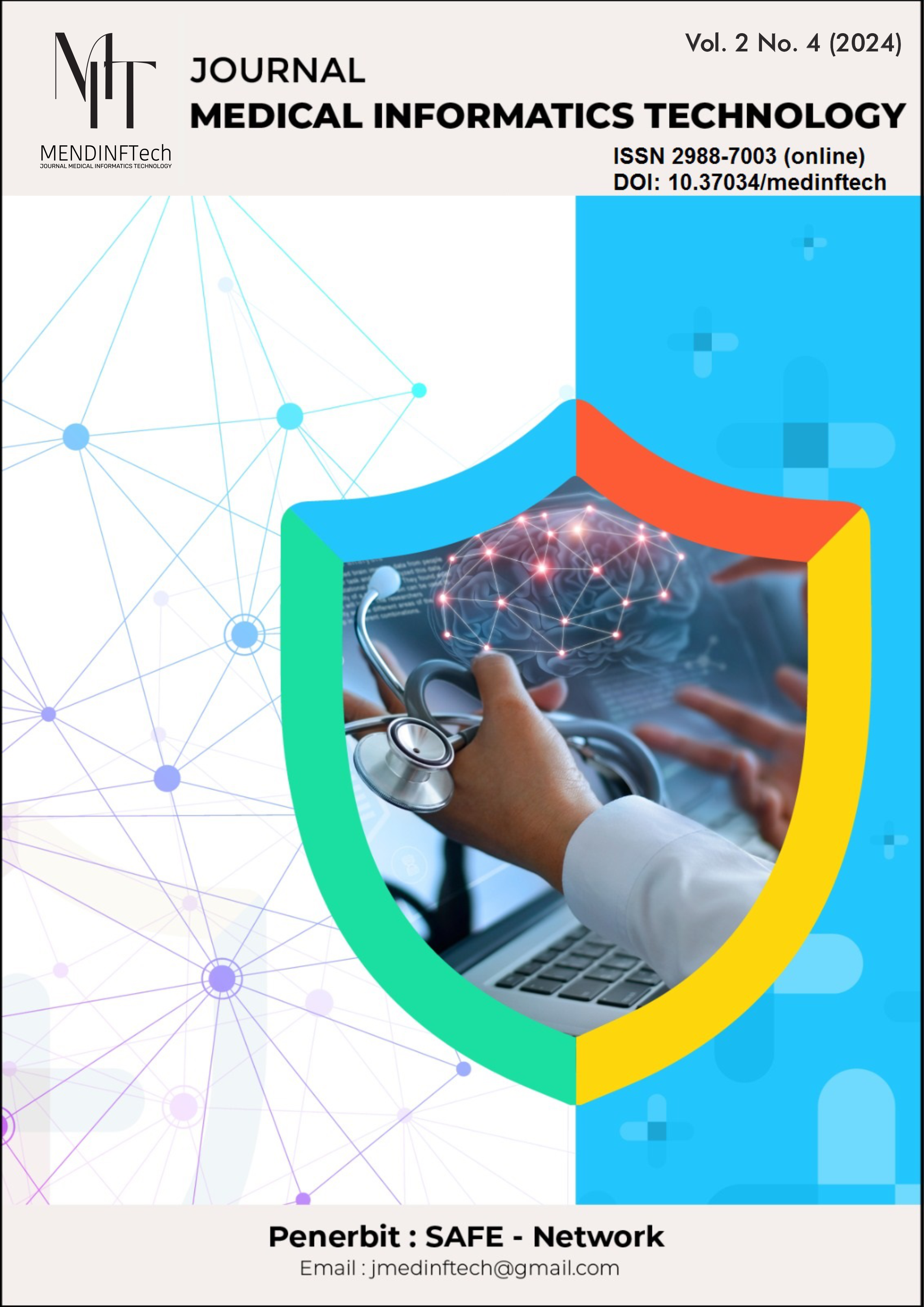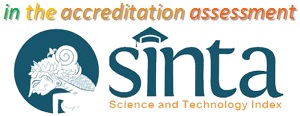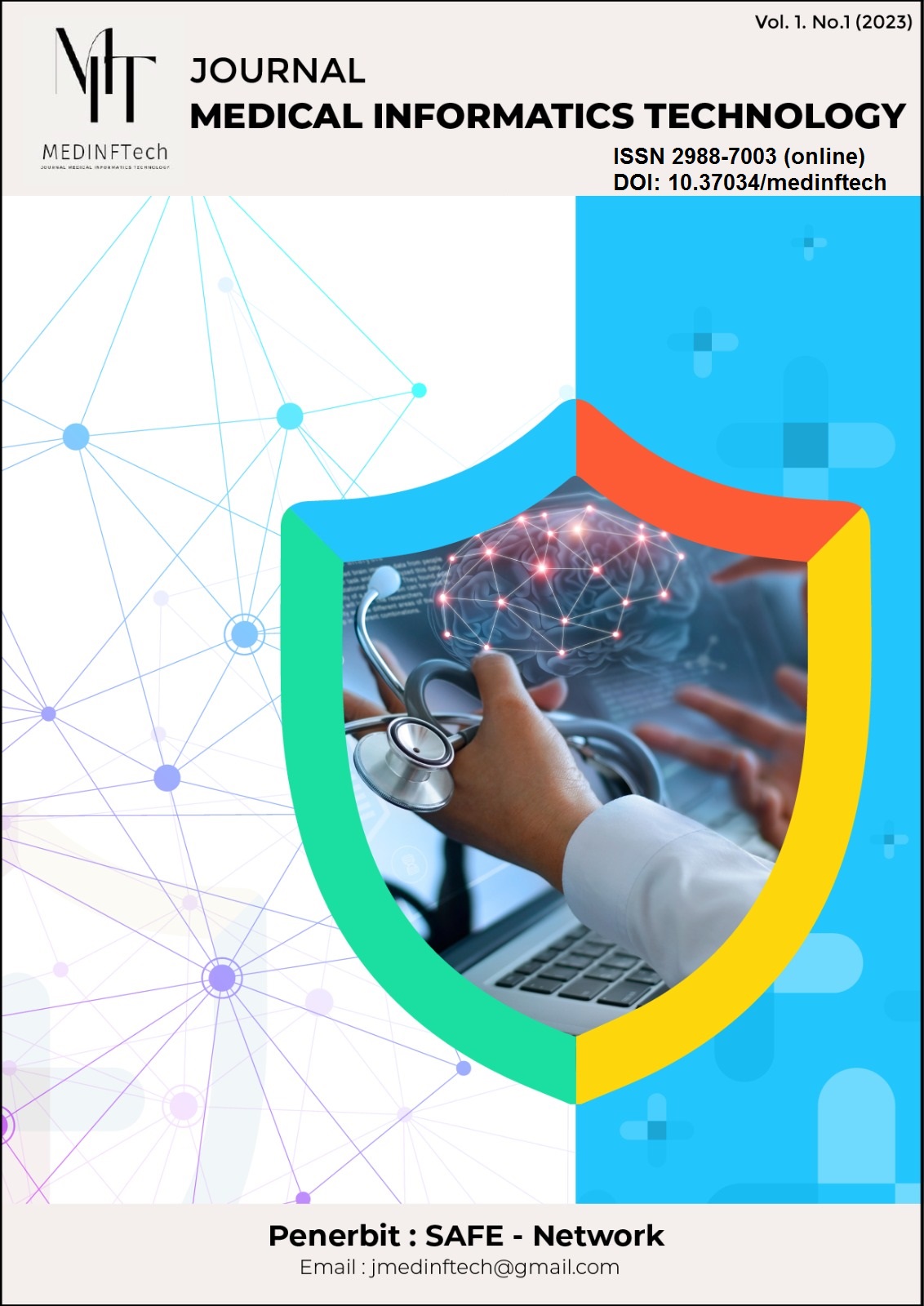Risk Factors for Multidrug-Resistant Bacterial Infections in Hospital-Acquired Pneumonia at Cipto Mangunkusumo Hospital
DOI:
https://doi.org/10.37034/medinftech.v2i4.94Keywords:
Antibiotic Use, Cipto Mangunkusumo Hospital, Hospital-Acquired Pneumonia, Multidrug-Resistant Bacterial Infection, Risk FactorsAbstract
Multidrug-resistant (MDR) hospital-acquired pneumonia (HAP) is linked to high mortality, extended hospital stays, and increased healthcare costs. Identifying risk factors for MDR HAP is essential to formulate effective management strategies. This study analyzed the proportion of risk factors associated with MDR bacterial infections in HAP patients treated at Cipto Mangunkusumo General Hospital. Using a retrospective cohort design, data were collected from medical records of HAP patients hospitalized between 2015 and 2016. A total of 68 patients met the inclusion criteria, while 10 were excluded due to fungal or non-pathogenic bacterial growth in sputum cultures. Patients were categorized as infected with MDR or non-MDR bacteria based on the resistance profile of their initial sputum cultures. Descriptive analysis was conducted using Microsoft Excel to calculate proportions of risk factors, without applying inferential statistical tests due to the limited sample size. The incidence of HAP was 6.12 per 1000 admissions in 2015 and 6.15 in 2016. MDR bacterial infections were observed in 95% of cases in 2015 and 82.1% in 2016. Key risk factors for MDR infections included prior antibiotic use within 90 days (100%), albumin levels <2.5 g/dL (100%), Charlson Comorbidity Index ≥3 (95.9%), age >60 years (95.2%), hospitalization >5 days (92.5%), nasogastric tube (NGT) insertion (92.1%), prior ICU/HCU admission within 90 days (81.8%), and steroid use >10 mg/day for >14 days (28.6%). These results emphasize that most HAP cases were caused by MDR bacteria, with prior antibiotic use and low albumin as predominant risk factors, necessitating targeted interventions for at-risk populations.
Downloads
References
A. Livesey et al., “Practices to prevent non-ventilator hospital-acquired pneumonia: a narrative review,” J. Hosp. Infect., vol. 151, pp. 201–212, Sep. 2024, doi: 10.1016/j.jhin.2024.03.019.
S. Azmi et al., “Assessing the burden of pneumonia using administrative data from Malaysia, Indonesia, and the Philippines,” Int. J. Infect. Dis., vol. 49, pp. 87–93, Aug. 2016, doi: 10.1016/j.ijid.2016.05.021.
F. J. Candel et al., “Ten issues to update in nosocomial or hospital-acquired pneumonia: An expert review,” J. Clin. Med., vol. 12, no. 20, p. 6526, Oct. 2023, doi: 10.3390/jcm12206526.
S. Gandra, G. Alvarez-Uria, P. Turner, J. Joshi, D. Limmathurotsakul, and H. R. van Doorn, “Antimicrobial resistance surveillance in low- and middle-income countries: Progress and challenges in eight south Asian and southeast Asian countries,” Clin. Microbiol. Rev., vol. 33, no. 3, Jun. 2020, doi: 10.1128/cmr.00048-19.
A. Salawudeen et al., “Epidemiology of multidrug-resistant Klebsiella pneumoniae infection in clinical setting in South-Eastern Asia: a systematic review and meta-analysis,” Antimicrob. Resist. Infect. Control, vol. 12, no. 1, p. 142, Dec. 2023, doi: 10.1186/s13756-023-01346-5.
A. R. Modi and C. S. Kovacs, “Hospital-acquired and ventilator-associated pneumonia: Diagnosis, management, and prevention,” Cleve. Clin. J. Med., vol. 87, no. 10, pp. 633–639, Oct. 2020, doi: 10.3949/ccjm.87a.19117.
S.-S. Jean, Y.-C. Chang, W.-C. Lin, W.-S. Lee, P.-R. Hsueh, and C.-W. Hsu, “Epidemiology, treatment, and prevention of nosocomial bacterial pneumonia,” J. Clin. Med., vol. 9, no. 1, p. 275, Jan. 2020, doi: 10.3390/jcm9010275.
R. Zaragoza et al., “Update of the treatment of nosocomial pneumonia in the ICU,” Crit. Care, vol. 24, no. 1, p. 383, Jun. 2020, doi: 10.1186/s13054-020-03091-2.
M. R. De Blasiis et al., “Impact of antibiotic exposure on antibiotic-resistant Acinetobacter baumannii isolation in intensive care unit patients: a systematic review and meta-analysis,” J. Hosp. Infect., vol. 143, pp. 123–139, Jan. 2024, doi: 10.1016/j.jhin.2023.11.002.
A.-P. Magiorakos et al., “Multidrug-resistant, extensively drug-resistant and pandrug-resistant bacteria: an international expert proposal for interim standard definitions for acquired resistance,” Clinical Microbiology and Infection, vol. 18, no. 3, pp. 268–281, Mar. 2012, doi: 10.1111/j.1469-0691.2011.03570.x.
D. Hammoudi Halat and C. Ayoub Moubareck, “Hospital-acquired and ventilator-associated pneumonia caused by multidrug-resistant Gram-negative pathogens: Understanding epidemiology, resistance patterns, and implications with COVID-19,” F1000Res., vol. 12, p. 92, 2023, doi: 10.12688/f1000research.129080.1.
M. Assefa, “Multi-drug resistant gram-negative bacterial pneumonia: etiology, risk factors, and drug resistance patterns,” Pneumonia (Nathan), vol. 14, no. 1, p. 4, May 2022, doi: 10.1186/s41479-022-00096-z.
C. J. Wiedermann, “Hypoalbuminemia as surrogate and culprit of infections,” Int. J. Mol. Sci., vol. 22, no. 9, p. 4496, Apr. 2021, doi: 10.3390/ijms22094496.
V. Hespanhol and C. Bárbara, “Pneumonia mortality, comorbidities matter?,” Pulmonology, vol. 26, no. 3, pp. 123–129, May 2020, doi: 10.1016/j.pulmoe.2019.10.003.
L. P. W. Goh, H. Marbawi, S. M. Goh, A. K. Bin Abdul Asis, and J. A. Gansau, “The prevalence of hospital-acquired infections in Southeast Asia (1990-2022),” J. Infect. Dev. Ctries., vol. 17, no. 2, pp. 139–146, Feb. 2023, doi: 10.3855/jidc.17135.









